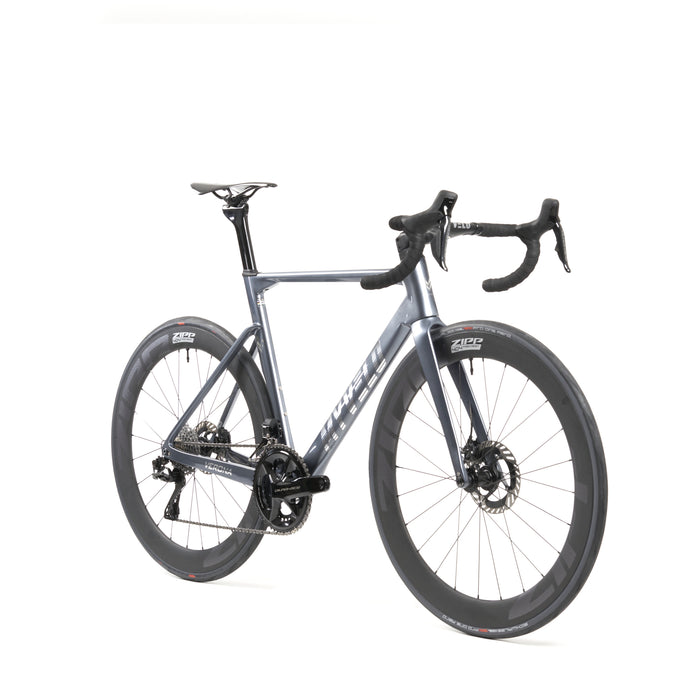
Verona road bike
incl. FREE shipping & free returns

Slipstreaming is a common phenomenon in road cycling that occurs when strong crosswinds affect the peloton. This causes the peloton to spread out, and small groups form as riders try to stay in the slipstream. In cycling, slipstreaming refers to the area directly behind a rider where air resistance is significantly reduced. Those who slipstream save up to 30–40% of their energy because they need to exert less effort to maintain the same speed.
Slipstream is particularly important when riding on wind edges and uphill – if you are incorrectly positioned, you will quickly lose contact.
A famous example of wind edge tactics is the Tour de France, where teams often launch attacks in strong crosswinds to overtake competitors.

Entdecke den MYVELO
Entdecke Dein Traum E-Bike im MYVELO Onlineshop. Direkt vom Hersteller Dein Fahrrad aussuchen.

Dein Traumrad
MYVELO hat bereits 2 Standorte: Oberkirch & Geretsried. Komm in unsere Flagship Stores und probiere Dein Traum Bike aus. Lass Dich von uns zu Deinen Anforderungen beraten.

Leasen statt kaufen
Spare mit Leasing! Finanziere Dein Traum E-Bike ganz einfach über Deinen Arbeitgeber. MYVELO unterstützt Dich im Leasing-Prozess bei Deinen Fragen.

Das Kettenblatt ist ein zentrales Bauteil am E-Bike, das oft unterschätzt wird. Gerade bei E-Bikes mit Mittelmotoren hat die Wahl des Kettenblatts großen Einfluss auf die Übersetzung, das Tretgefühl und die Effizienz des Motors. In diesem Artikel erklären wir, worauf man achten sollte und welche Unterschiede verschiedene Kettenblattgrößen machen.

Eine gute Beleuchtung gehört zu den wichtigsten Sicherheitsfeatures eines E-Bikes. Doch wer viel pendelt, in der Dämmerung fährt oder regelmäßig längere Touren unternimmt, merkt schnell: Fahrradlicht ist nicht gleich Fahrradlicht. Zwischen „gut“ und „sehr gut“ liegen oft Welten – besonders, wenn man die höheren Geschwindigkeiten und längeren Einsatzzeiten eines E-Bikes berücksichtigt.

Wer sich den Traum vom hochwertigen E-Bike erfüllen möchte, steht oft vor einer großen Investition. Doch immer mehr Menschen entdecken eine clevere Alternative zum Kauf: das Fahrrad privat leasen. Was bisher vor allem im Jobrad-Modell über Arbeitgeber bekannt war, funktioniert heute auch für Privatpersonen – flexibel, günstig und steuerlich oft vorteilhaft.